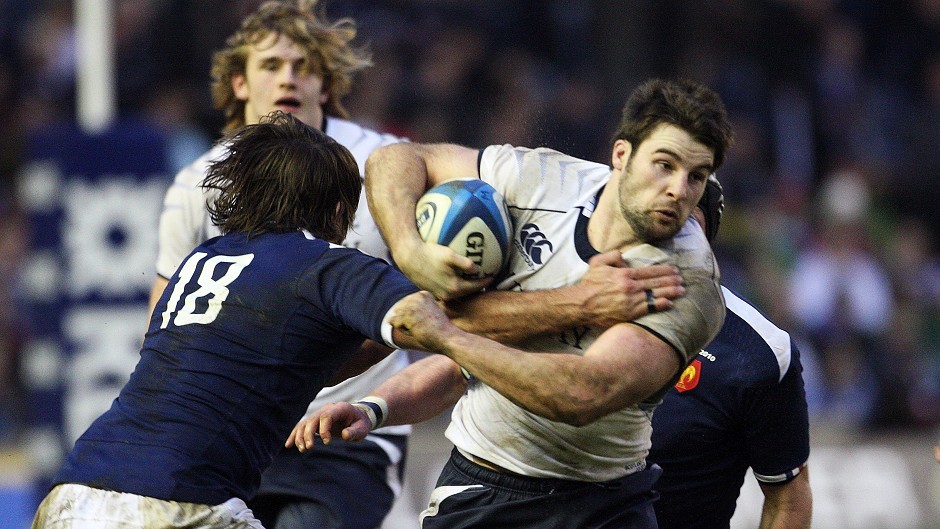Johnnie Beattie, Geoff Cross and Kelly Brown have all been omitted from head coach Vern Cotter’s Scotland extended training squad for the Rugby World Cup.
The 46-man group, which will be reduced to 31 for the tournament in England this September, will convene at Ravenscraig Regional Sports Facility on Monday, June 15 for a range of strength and conditioning tests.
Players from PRO12 champions Glasgow Warriors make up almost half the squad (22), with European Challenge Cup finalists Edinburgh Rugby providing 12, and clubs outside Scotland a further 12 – including English Premiership winners Jim Hamilton and Duncan Taylor, and Challenge Cup winner Greig Laidlaw.
Cotter, said: “The selection process was made easier by some good performances from a number of players, especially in the latter part of the season.
“Hopefully the confidence the players have gained from their successes will filter through into the rest of Scottish rugby. We’ll need that for this campaign.”
Among the most experienced in the squad are six players competing for a place in a third Rugby World Cup: John Barclay (back-row), Chris Cusiter (scrum-half), Alasdair Dickinson (prop), Ross Ford (hooker), Jim Hamilton (second-row) and Sean Lamont (wing).
The inclusion of Barclay sees the Scarlets flanker feature in a national squad selection for the first time since the 2013 autumn internationals, while 25-times capped Wasps stand-off, Ruaridh Jackson, will also mount an international comeback, having recovered from a season-long knee injury.
Jackson, Alasdair Strokosch (back-row) and Richie Vernon (centre) are eyeing a second tournament having featured in New Zealand in 2011, though Vernon’s presence was in his former position of number 8.
The remaining 37 selected players are left with the sizeable incentive of their first exposure to the sport’s flagship Cup competition, eight of which are, as yet, uncapped: Allan Dell (prop), Damien Hoyland (wing), Willem Nel (prop) and Stuart McInally (hooker) earn selection from Edinburgh Rugby; while Hugh Blake (back-row) Mike Cusack (prop), Rory Hughes (wing) and Josh Strauss (back-row) are called up from Glasgow Warriors.
Despite naming a 46-man training group, Cotter was keen to stress that the squad was by no means a closed group.
“Flexibility and being able to adapt are among our key themes as we move towards the final 31 and the Rugby World Cup. This is not a firmly fixed squad, it’s a living document,” he added.
“There are a number of players we’ve spoken to who will be working on things with their clubs and looking for form, and may well feature in our warm-up games as a chance to push for selection.
“We’re working hard to be as cohesive as possible and push the limits of how far we can go.”
Those limits will be put to the test in a fortnight’s time when the squad travel to train at high altitude in Font Romeu in the French Pyrenees, returning home for two months of skills, conditioning and tactical training at the home of Scottish rugby.
Cotter added: “Our priorities will focus on the major aspects of the game.
“Physically we’ll be working very hard to find peak form. We know that teams play better in the Rugby World Cup, and we want to be one of those teams.
“We have four matches before the tournament; four 80-minute spells in which we can practice our combinations and work our plays, in attack and defence, providing opportunities for a number of players to compete for a place in the final 31.
“Every team entering the Rugby World Cup wants to win, but to win a World Cup you first have to qualify from your pool, and that’s our major focus: two games in five days [Japan and USA] followed by another in six [South Africa] and another in seven [Samoa].
“We’ll focus on preparing appropriately for each of those matches, so that we can become as effective as possible in this Rugby World Cup.”
Scotland will face France, Ireland and Italy as part of the national team’s build-up to the World Cup
The four-match schedule played on consecutive Saturdays from mid-August will begin when Cotter’s men travel to face Ireland at the Aviva Stadium in Dublin.
Back-to-back fixtures against Italy will follow in Turin and Edinburgh before concluding preparations against France in Paris at the start of September.
The final squad will leave for Gloucester on Wednesday 16 September, ahead of their opening Rugby World Cup 2015 Pool match against Japan at Kingsholm Stadium on Wednesday, September 23 (kick-off 2.30pm).
The Scots will face USA at Elland Road in Leeds on Sunday, September 27 followed by South Africa and Samoa on consecutive Saturdays (October 3 and 10) at St James Park, Newcastle.
